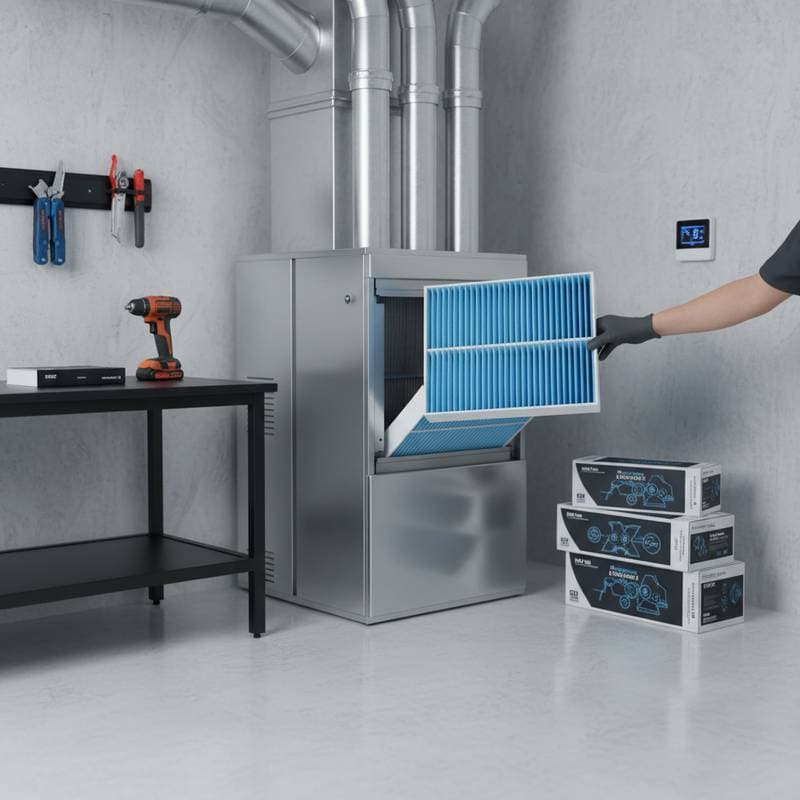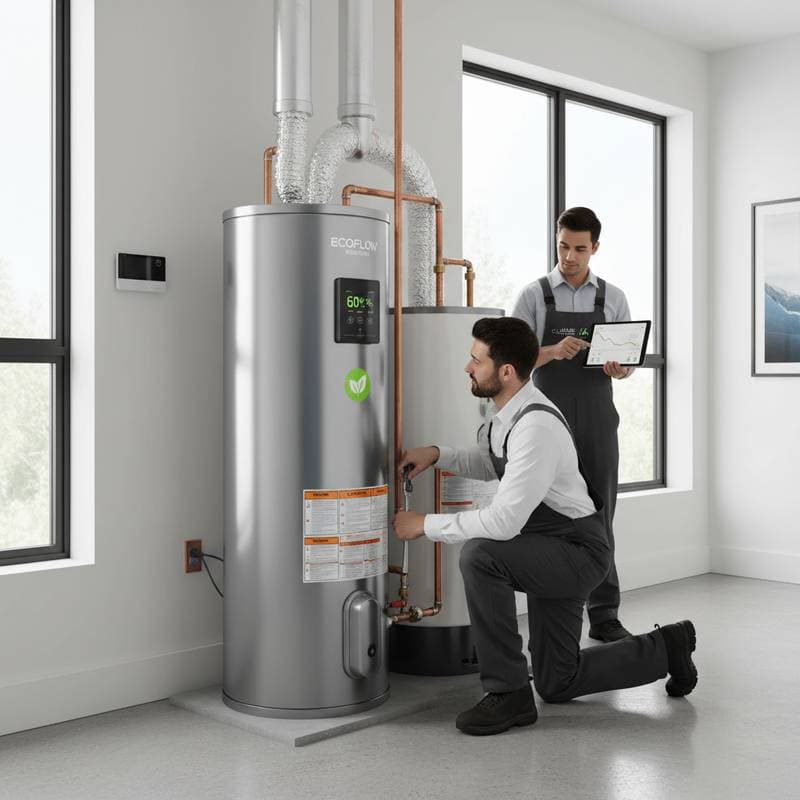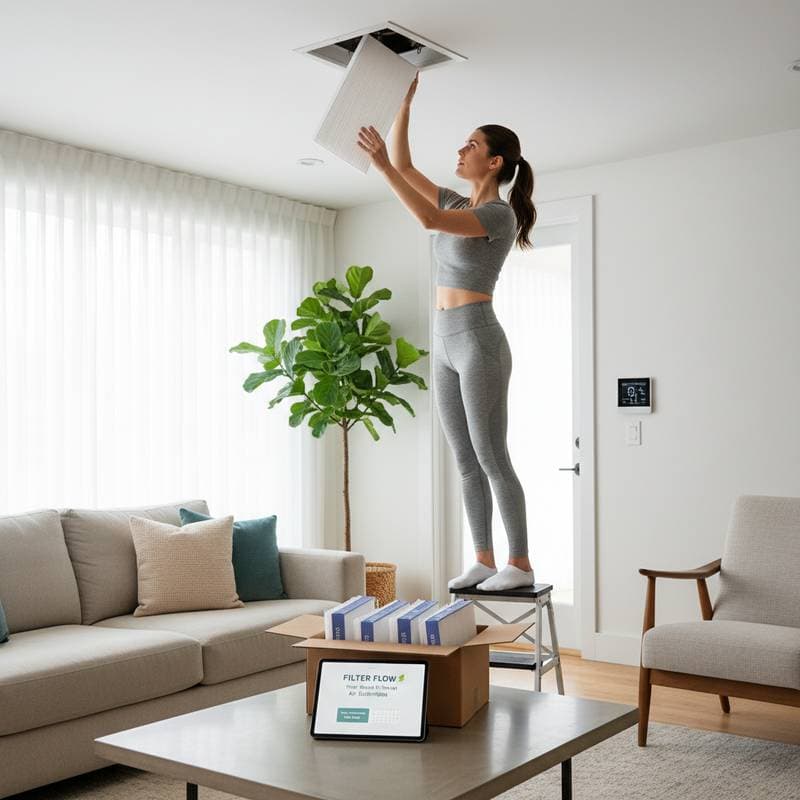Introduction to HVAC Filter Savings
Routine maintenance of your HVAC system begins with a fundamental task: replacing air filters. Homeowners often overlook this simple action, yet it yields significant financial and performance benefits. By ensuring clean filters, you optimize airflow, reduce energy consumption, and safeguard against premature system failures.
The potential savings reach up to $480 per year, depending on your home size, usage patterns, and local energy costs. This figure derives from decreased electricity demands and fewer repair needs. Implementing a consistent replacement schedule transforms a minor chore into a powerful strategy for long-term home comfort and economy.
Recommended Replacement Schedules
Establishing the right replacement interval depends on your household dynamics and environmental factors. The following table outlines guidelines tailored to common scenarios.
| Household Type | Recommended Replacement Interval |
|---|---|
| Single occupant, no pets | Every 3–4 months |
| Family home, no pets | Every 2–3 months |
| Home with one pet | Every 2 months |
| Multiple pets or allergies | Monthly |
Residences in regions with high dust levels or humidity demand more frequent inspections. Observe for signs such as dust accumulation near vents or diminished airflow from registers, which signal the need for immediate replacement. Adjusting your routine based on these indicators prevents efficiency losses and maintains air quality.
Impacts of Dirty Filters on System Performance
Clogged filters impede airflow, triggering a cascade of operational issues. The HVAC unit labors harder to distribute air, elevating energy use and operational costs.
Key consequences include:
- Diminished Efficiency: Restricted passages force the blower to consume additional power, inflating electricity bills.
- Temperature Inconsistencies: Certain areas of the home experience uneven heating or cooling, compromising comfort.
- Accelerated Equipment Wear: Excess strain on components like motors and compressors leads to earlier breakdowns and higher repair expenses.
- Compromised Air Quality: Unfiltered particles such as dust and allergens spread throughout living spaces, affecting health.
Maintaining clean filters alleviates these pressures, ensuring steady performance and extending the overall lifespan of your HVAC investment. Regular checks reveal problems early, allowing for proactive adjustments.
Factors Influencing Annual Filter Maintenance Costs
Budgeting for filter replacements involves considering multiple variables that affect both expense and effectiveness. Understanding these elements helps you select options that align with your needs.
Primary influences encompass:
- Filter Quality Levels: Premium filters with higher MERV ratings provide superior filtration but incur greater upfront costs; however, their durability often offsets expenses through extended use.
- System Operating Frequency: Homes with continuous HVAC operation necessitate quicker turnover rates, increasing annual outlays.
- Environmental Conditions: Presence of pets, high dust, or poor external air quality accelerates clogging, requiring more replacements.
- Filter Dimensions: Larger units suited to bigger systems cost more initially but support less frequent changes due to higher capacity.
- Local Energy Pricing: Efficient filtration directly lowers power draw, amplifying savings in areas with elevated utility rates.
Strategically choosing filters that match your home's demands balances initial investments with ongoing benefits. Track your usage patterns to refine this approach over time, maximizing both airflow and fiscal returns.
Step-by-Step Guide to DIY Filter Replacement
Performing a filter change requires minimal tools and time, typically under 10 minutes. Begin by locating your HVAC unit, often in the basement, attic, or utility closet. Shut off the system at the thermostat and power source for safety.
- Remove the existing filter by accessing the slot or panel, usually marked with an arrow indicating airflow direction.
- Inspect the filter for dirt buildup; hold it to light to assess blockage levels.
- Select a compatible replacement, matching size and type as specified on the old unit.
- Insert the new filter, ensuring the arrow points toward the blower for correct orientation.
- Restore power and test the system for proper operation, checking vents for consistent airflow.
Repeat this process according to your schedule. Document dates to maintain consistency and monitor any unusual system behaviors post-installation.
Common Questions on HVAC Filter Management
In What Ways Do Filter Changes Reduce Expenses?
Clean filters minimize resistance, enabling the blower motor and compressor to operate with less effort. This efficiency shortens runtime cycles, directly lowering electricity consumption. Over time, reduced wear also curtails repair and replacement costs for major components.
Is It Possible to Clean and Reuse Disposable Filters?
Standard disposable filters lack reusability due to their delicate fiber structure. Attempts to clean them often compromise filtration capabilities. Opt for reusable electrostatic models if sustainability appeals; adhere strictly to manufacturer guidelines for washing and drying to preserve performance.
What Risks Arise from Ignoring Filter Replacements?
Prolonged neglect restricts airflow, potentially causing overheating, frozen coils, and widespread dust circulation. Air quality deteriorates, and severe blockages may precipitate total system shutdowns. Addressing this oversight through regular changes averts these escalating problems.
How Do You Identify Premature Filter Clogging?
Examine for surface grime, weakened vent output, or unusual odors during operation. These indicators prompt swift action to restore function and prevent secondary damage.
Does Upgrading to High-MERV Filters Strain the System?
Excessively high MERV ratings can impede airflow in systems not engineered for them, increasing energy demands. Consult your equipment manual for suitable ratings to harmonize filtration strength with circulation needs.
Enhancing Your Overall HVAC Care Practices
Integrate filter replacements into a broader maintenance framework for optimal results. These habits complement each other to sustain efficiency.
- Ensure supply and return vents remain unobstructed by furniture or fabrics.
- Wipe down registers and grilles each month to remove surface dust.
- Arrange yearly professional inspections to evaluate coils, refrigerant levels, and overall condition.
- Install a programmable thermostat to regulate cycles and prevent overuse.
- Address duct and window leaks through sealing to minimize energy loss.
Adopting these measures collectively amplifies the benefits of filter care, fostering a resilient HVAC setup.
Implementing Changes for Sustained Energy Efficiency
Commit to filter replacements as a cornerstone of your home maintenance plan. Dedicate brief intervals every few months to this task, yielding noticeable improvements in system reliability and comfort.
Consistent application leads to enhanced air circulation, subdued noise levels, and uniform temperatures across rooms. Paired with complementary routines, these efforts safeguard your HVAC longevity, delivering enduring savings and peace of mind.





